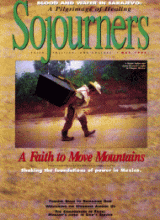When Gerald Forshey was still a university student some four-plus decades ago, his mother told him that he could never be a minister because he loved movies too much! Forshey, however, went on to be an ordained United Methodist pastor, do a doctorate in film at the University of Chicago, and teach extensively on film history.
Forsheys blend of concerns led him to realize that there is a glaring omission of serious works on big religious movies in film scholarship. American Religious and Biblical Spectaculars is a study long overdue and Forshey delivers well on the subject. He analyzes such films as Ben-Hur, Godspell, The Greatest Story Ever Told, Jesus Christ Superstar, King of Kings, The Last Days of Pompeii, The Last Temptation of Christ, and The Ten Commandments (to name just a few).
Almost all of the religious spectaculars Forshey considers were set in the biblical period. He comes up with many intriguing observations, noting for example that religious spectaculars were most popular in the 1950s but were also most ignored by critics. More significantly, he critiques the many cultural uses of religious movies.
"Over the years, as American religions struggled with the place of a naturalistic world view, the concept of the righteous nation, and the basis of individual ethics, American film making was changing," he writes. Films purporting to be biblical inevitably reflected the ethos of their society and promoted American values and the American way of life "so effectively that it is often difficult to distinguish between patriotism and religion." (Cecil B. DeMille was particularly unabashed at promoting his view of the American Dream in films.)
Read the Full Article
